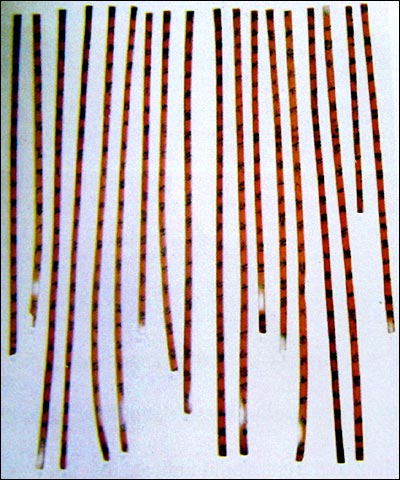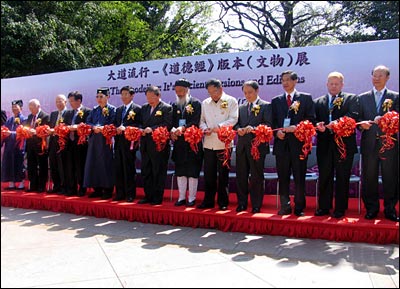| Tools: Save | Print | E-mail | Most Read |
| Earliest Edition of Daodejing Exhibited in HK |
| Adjust font size: |
The "bamboo slip" Daodejing, which could be dated prior to 278 BC, is the feature attraction at a large exhibition in Hong Kong yesterday together with over 300 different editions and versions of this Chinese philosophical Taoist classic.
It is the largest exhibition of the Daodejing in the world, Jiang Jianyong, vice chairman of the China Religious Culture Communication Association, said at the opening ceremony. The exhibits include a variety of editions, including exegetical commentaries, modern Chinese language editions (about 180 kinds), and over 26 foreign language translations (about 250 kinds) of Daodejing, according to the association. The "bamboo slip" Daodejing, widely accepted as the earliest version of the classic, was discovered in a tomb in Hubei Province in 1993. Archaeologists determined that the three bundles of slips could be dated back to the Warring States Period (475-221 BC) and amount to one third of today's edition. This exhibition will present five pieces from the second bundle of slips. Other precious exhibits are silk manuscripts from the Western Han Dynasty (206 BC - AD 25) discovered in the Mawangdui tomb in Hunan Province in 1973 and different editions of Dunhuang manuscripts discovered in the Mogao Grottoes. The exhibition will last until May 9, after which it will be shown at the National Library in Beijing. Translated into over 30 languages and reprinted numerous times throughout its 2,000-year history, Daodejing is one of the most studied and well-known Chinese philosophical classics and considered one of the most important texts in the human intellectual heritage. It analyzes the relations between human and nature, and reveals the truth of harmony in life.
(Xinhua News Agency April 27, 2007) |
| Tools: Save | Print | E-mail | Most Read |
 |
| Related Stories |
|



